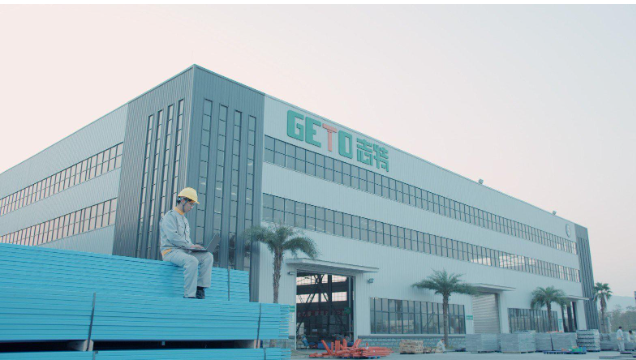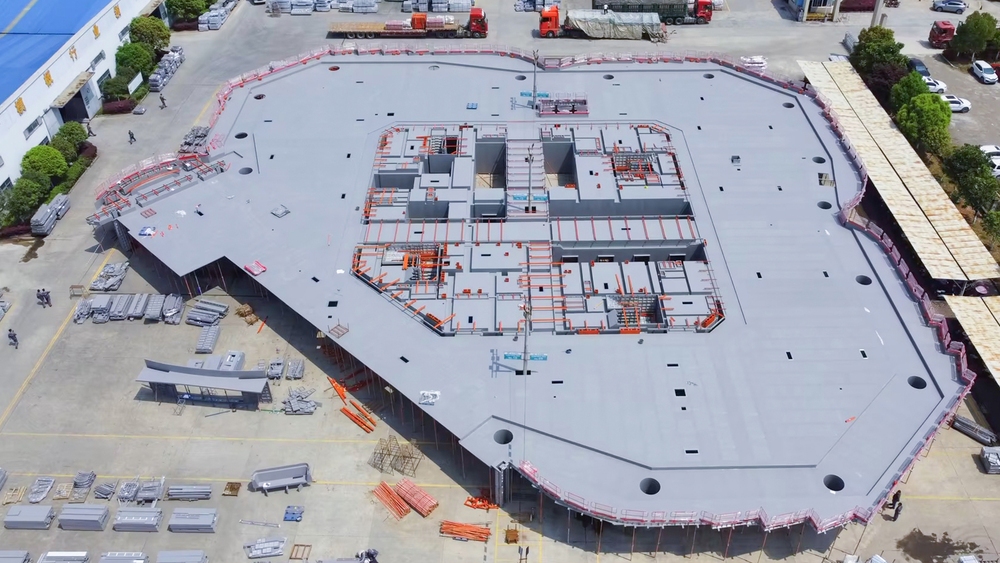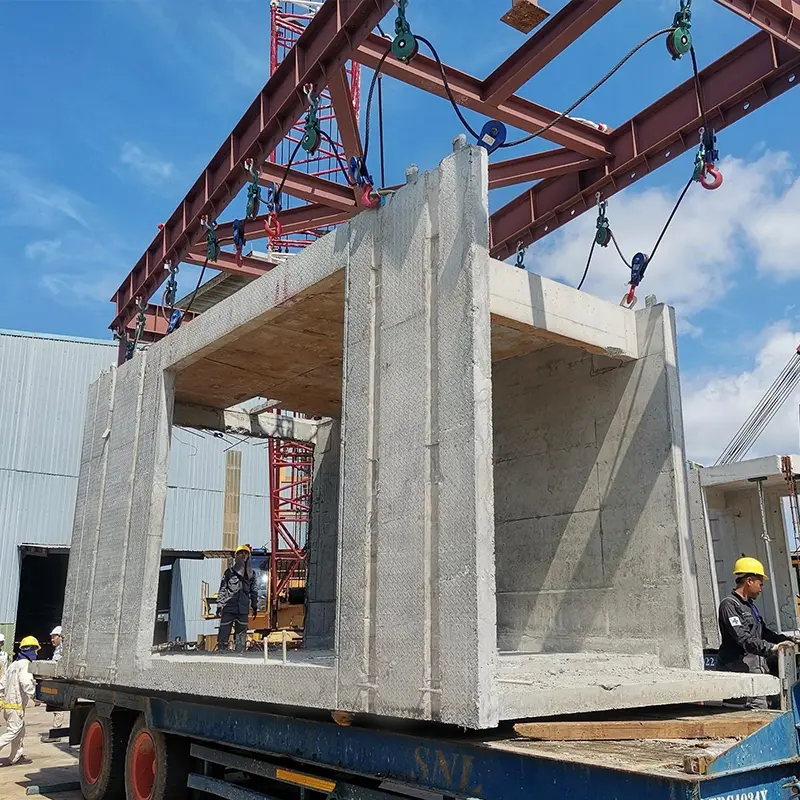The Critical Role of Formwork Ties in Concrete Works | GETO 2025
In the world of construction, formwork ties play a pivotal role. They are integral to the process of concrete forming, ensuring the stability and integrity of structures.
Formwork ties maintain the alignment and spacing of formwork panels. They withstand the lateral pressure exerted by fresh concrete, preventing formwork failure.
Different types of form ties, such as snap ties, loop ties, and threaded ties, cater to various construction needs. Each type has its unique features and applications, contributing to the efficiency and safety of construction projects.
The selection and proper installation of high-strength formwork tie rods are critical. They directly impact the quality of the finished concrete surface and the overall safety of the construction site.
This guide aims to provide a comprehensive understanding of cost-effective form ties for large projects. It will delve into their types, applications, and best practices, highlighting their importance in the construction industry.
The Role of Formwork Ties in Concrete Construction
Formwork ties are essential for maintaining the integrity of concrete structures during construction. They hold the formwork panels in place, ensuring proper alignment.
The pressure of fresh concrete is immense. Concrete form ties are engineered to bear this pressure, preventing formwork collapse. This is vital for both safety and structural soundness.
Each type of tie offers distinct benefits. Snap ties are popular for their ease of use, while threaded ties provide strength and precise adjustments.
Loop ties add versatility. They can be adapted to various formwork systems, making them suitable for a wide range of projects.
The selection of formwork ties requires careful consideration. Factors like concrete pressure, wall thickness, and formwork design influence the decision-making process.
Proper installation is crucial. Incorrect use of concrete form ties can lead to catastrophic failures, underscoring their critical role in construction safety.
The role of wall formwork ties extends beyond mere support. They ensure that concrete cures as intended, affecting the final appearance and quality.
Compliance with industry standards is necessary. Adhering to these regulations ensures the safety and efficiency of construction processes.
Heavy-duty form ties also contribute to project timelines. Their timely installation can significantly speed up construction, aiding in meeting deadlines.
In complex structures, such as dams or bridges, concrete form ties are indispensable. Their strategic use in such projects highlights their critical role in modern construction.
Types of Formwork Ties
Understanding different types of formwork ties helps in choosing the right one for your project. Various ties cater to specific needs and conditions in construction.
Snap Ties
Snap ties are quick to install and remove, making them ideal for fast-paced projects. Their design simplifies the concrete forming process.
Loop Ties
Loop ties offer versatility and are compatible with diverse formwork systems. They are easy to adjust, making them suitable for many applications.
Threaded Ties
Threaded ties provide high strength and precise alignment capabilities. They allow for adjustments on-site, fitting custom project requirements.
Other Common Types
In addition to snap, loop, and threaded ties, there are speciality ties for unique applications.
Plastic ties, for instance, are used where metal corrosion is a concern. They are lightweight and recyclable, reducing environmental impact.
Reusable ties are eco-friendly, cutting costs and waste on large projects. They help in keeping budgets in check.
For projects requiring water resistance, water-resistant ties prevent leakage, maintaining concrete integrity.
Overall, selecting the correct formwork tie type is essential for achieving desired construction outcomes. This requires considering the specific demands of your project and the attributes each tie offers.
Selecting the Right Formwork Tie
Choosing the correct formwork tie is crucial for construction efficiency. Several factors influence this decision.
Consider the concrete pressure and wall thickness when selecting a tie. These elements impact the load the ties need to withstand.
The type of formwork system you are using also matters. Certain ties work better with particular formwork designs and materials.
Evaluating the environmental conditions can guide your choice as well. For instance, choose water-resistant ties in wet environments.
Cost and availability are important too. Ensure that your choice aligns with both budget constraints and project timelines.
Installation and Best Practices
Proper installation of formwork ties is key to structural success. Installing them incorrectly can lead to serious issues.
Before installing, inspect ties for defects. Damaged or faulty ties should never be used.
Best Practices for Installation:
- Measure tie spacing according to formwork design specifications.
- Use appropriate torque to avoid over-tightening or under-tightening.
- Align ties precisely to ensure even distribution of concrete pressure.
- Follow the manufacturer's instructions for each specific type.
During installation, ensure that ties are clean and free from debris. This minimises slippage or misalignment.
Regular inspection during installation is advisable. Identify any potential weaknesses early to prevent future problems.
Training workers in the correct use of structural form ties is essential. This leads to better handling and installation practices.
Remove ties carefully after use. The removal process should not damage the concrete surface. Proper practices contribute to overall construction success.
Innovations and Future Trends in Formwork Tie Technology
The construction industry is witnessing rapid technological advancement. Concrete ties are not an exception to this trend.
One of the major innovations is the use of eco-friendly materials. These materials minimize the environmental impact while maintaining strength.
Automation in construction is also influencing formwork tie technology. Automated systems ensure precise installation, reducing human error.
Furthermore, smart technology is making its way into building ties for formwork. Sensors can now monitor tie tension and concrete curing in real-time.
As these innovations evolve, they promise improved safety, efficiency, and sustainability. These advancements are revolutionising traditional construction practices.
Ensuring Safety and Compliance
Safety is paramount in construction, and formwork ties play a critical role. Proper installation and maintenance of concrete mold ties are essential to prevent accidents.
Compliance with industry standards ensures the reliability of formwork tie systems. Standards guide the design and application of these ties in various projects.
Regular inspections must be conducted to detect any potential issues early. Ignoring damaged ties can lead to catastrophic failures, affecting structural integrity.
Training workers on safe practices is essential. Misuse or mishandling of formwork ties can have severe consequences in dynamic construction environments.
Manufacturers are crucial in ensuring product quality. High-quality formwork ties must meet stringent regulatory specifications to guarantee safety on-site.
Environmental Considerations and Sustainability
Sustainability is an important focus in modern construction. Formwork ties contribute to green practices through recyclability and reduced waste generation.
Eco-friendly materials in formwork ties have become increasingly popular. Alternatives like biodegradable or recyclable plastics offer a sustainable option.
Innovations in formwork tie design aim to minimize environmental impact. Manufacturers are investing in solutions that support eco-friendly construction initiatives.
Conclusion: The Critical Impact of Formwork Ties on Construction Quality and Efficiency
Formwork ties are indispensable in construction for maintaining structure integrity. They ensure concrete formwork stays aligned and secure during pouring.
Proper use of formwork ties minimizes risks and enhances safety on-site. This precision leads to quality finishes and reduced maintenance issues.
With the right ties, projects can be more efficient, saving time and costs. This efficiency also contributes to meeting tight construction schedules.
Advancements in formwork tie technology continue to evolve. Innovations enhance both environmental sustainability and performance, benefiting the industry overall.
Ultimately, understanding and utilizing formwork ties effectively leads to superior construction outcomes. Their role extends beyond mere stability to ensuring project success.







